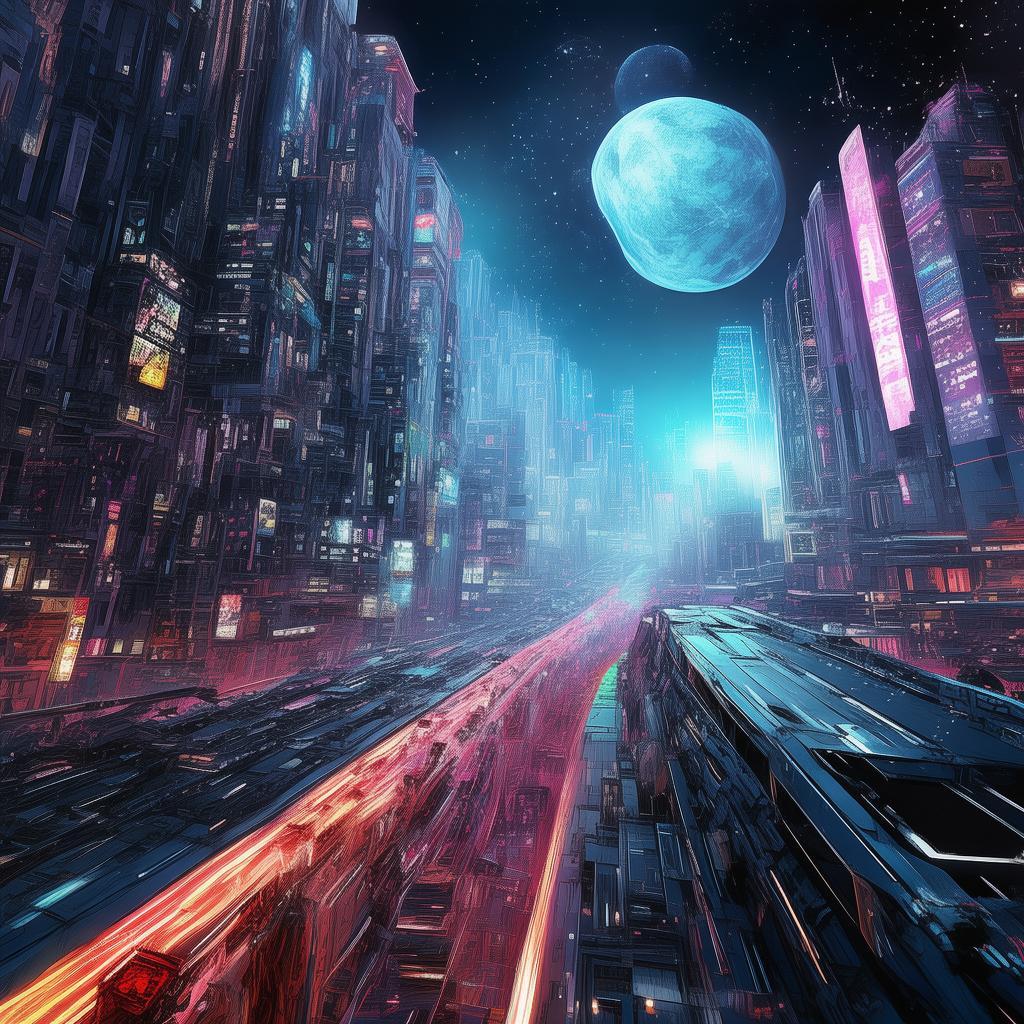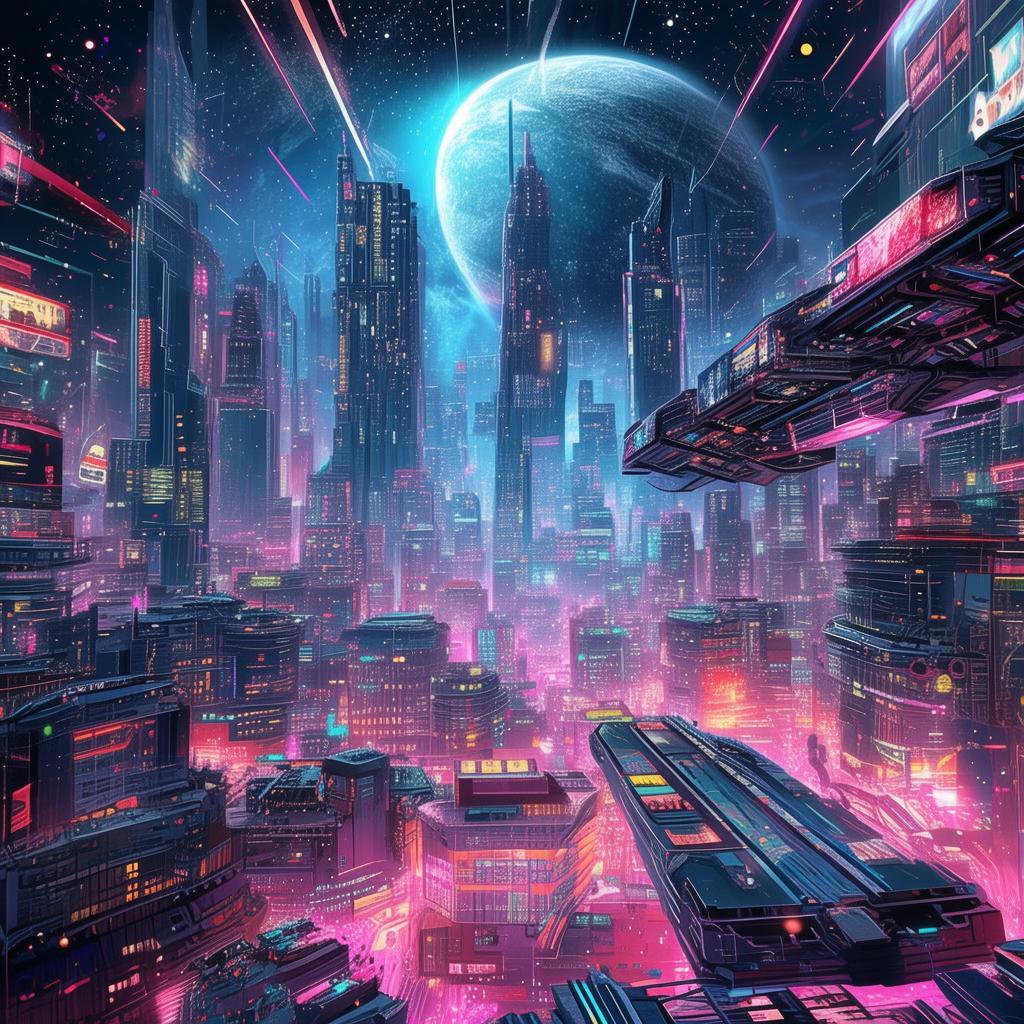The Chromatic Paradox
The sky was once a canvas of hues, but now it was merely a void, a stark reminder of the world's loss. In the year 2147, the Colorless Code had become a legend, whispered among the remnants of humanity. The world had been plunged into a black-and-white dystopia, where the absence of color had caused chaos and despair. The few who remembered the vibrant hues of their past lived in fear, knowing that the colorless existence was not the end.
Dr. Liora Kael, a brilliant scientist and a last-generation colorist, had dedicated her life to understanding the enigmatic code that had led to the world's colorlessness. She believed that the code held the key to restoring color to the world, but it was hidden in a labyrinth of encrypted data, buried deep within the remnants of a long-lost civilization.
In the heart of the decaying city of Neo-Lumina, where the echoes of laughter and the vibrant sounds of life had been replaced by the somber hum of machinery, Dr. Kael worked tirelessly in her lab. Her eyes, once a deep shade of emerald, now mirrored the colorless world outside her window. She was the last hope, and the weight of her responsibility was heavy.
One day, as she sifted through the ancient data, her fingers brushed against a peculiar pattern, a sequence of symbols that seemed to pulse with a life of its own. The Colorless Code, she thought, her heart pounding with a mix of hope and fear. She knew that this was her moment, her chance to unravel the mystery that had plagued humanity for so long.
As she decoded the first line of the code, the room seemed to come alive. The walls, which had been devoid of color, now flickered with faint hues, a preview of the world she was striving to restore. The code was a palette, a collection of colors encoded in binary, waiting to be brought to life.
Dr. Kael's next task was to find a way to bring the colors back into the world. She knew that it would not be easy. The Colorless Code was not just a technical challenge; it was a philosophical one. To restore color, she would have to confront the root of the world's colorlessness and the psychological impact it had on the human psyche.

She began by experimenting with various frequencies, attempting to mimic the wavelengths that once painted the sky with a spectrum of colors. The results were promising, but they were also dangerous. The colorless world was unstable, and any sudden introduction of color could cause chaos.
As she delved deeper into the code, she discovered that the colorlessness was not just a physical phenomenon. It was a metaphor for the loss of identity, creativity, and connection that humanity had experienced. The code was a palette, but it was also a mirror, reflecting the soul of a world that had forgotten its colors.
Her research attracted the attention of a group of radicals who believed that color was a tool of manipulation and control. They wanted to use the Colorless Code to impose their own vision of a colorless world, one where emotions were suppressed and creativity was forbidden. Dr. Kael knew that she had to act quickly, before the radicals could exploit her work.
The climax of her story unfolded in the heart of the city, where she faced off against the radicals. The air was charged with tension as she used her knowledge of the Colorless Code to restore color to the world, one pixel at a time. The crowd watched in awe as the colors returned, their faces reflecting the joy and relief that had been missing for so long.
In the end, Dr. Kael realized that the true power of the Colorless Code was not in the colors themselves, but in the potential for change that it represented. The world was no longer colorless; it was full of possibility. And as the first rays of light filtered through the sky, a new dawn began, a dawn of hope and renewal.
The Chromatic Paradox was not just a story of survival; it was a tale of resilience, of the human spirit's ability to overcome adversity and embrace the beauty of life. It was a story that would resonate with readers, spark discussions, and spread effortlessly, a testament to the enduring power of color and the indomitable will of humanity.
✨ Original Statement ✨
All articles published on this website (including but not limited to text, images, videos, and other content) are original or authorized for reposting and are protected by relevant laws. Without the explicit written permission of this website, no individual or organization may copy, modify, repost, or use the content for commercial purposes.
If you need to quote or cooperate, please contact this site for authorization. We reserve the right to pursue legal responsibility for any unauthorized use.
Hereby declared.









